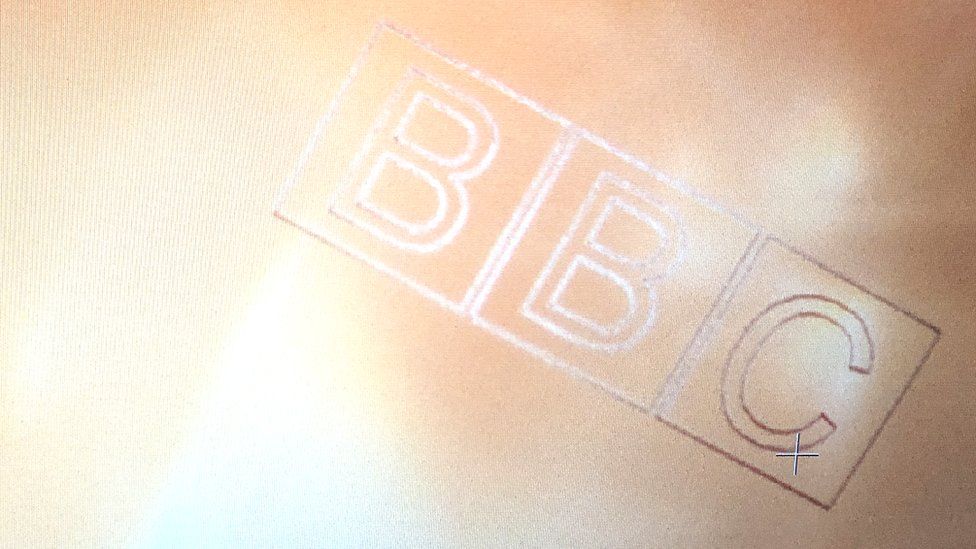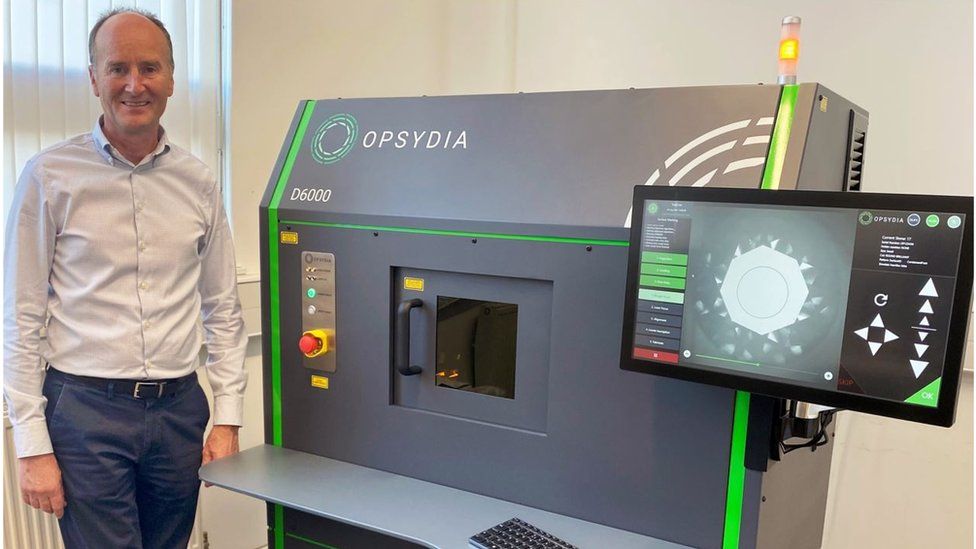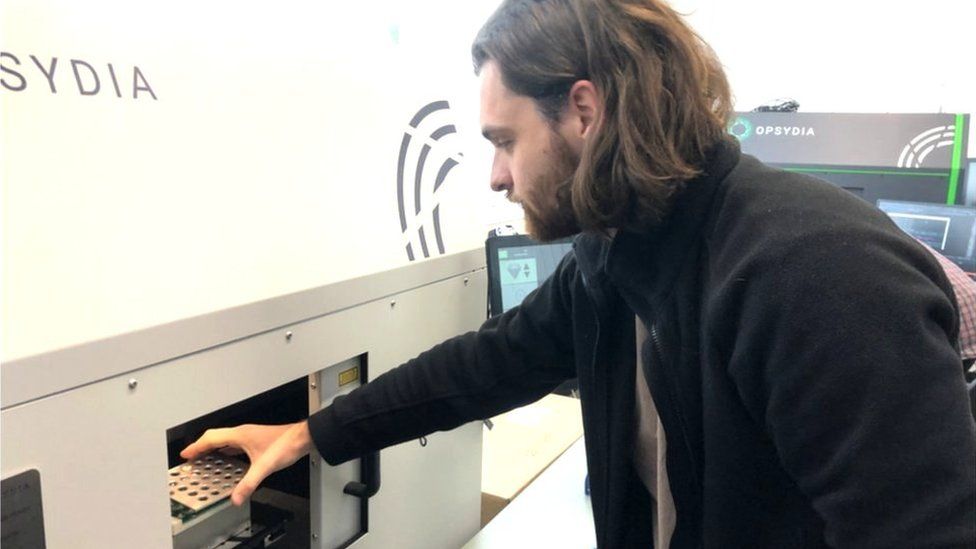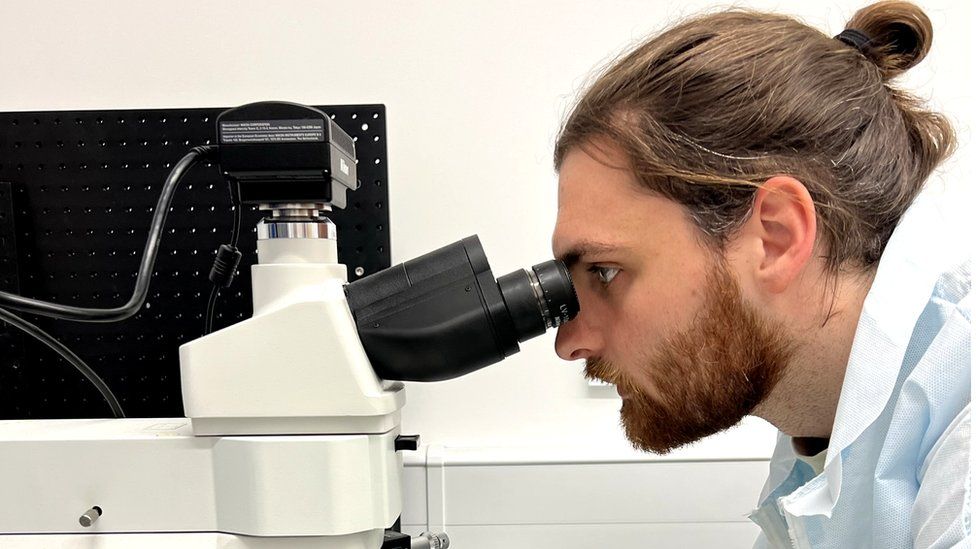Why lasers are being used to write inside diamonds

I am peering through a jeweller’s eyeglass, looking for the BBC logo that has been inscribed inside a small diamond.
The inscription has been made using unique technology developed by Oxford-based Opsydia.
Its machines are the only ones on the market that can penetrate the surface of a diamond and manipulate its atoms.
The logo I am trying to find is less than half a millimetre wide. Despite instruction from Lewis Fish, head of product at Opsydia, I can’t see it.
“It is very difficult,” he says. “They’re intentionally very fine, and it is really trained jewellers they are aimed at.”
But why would anyone want to write on the inside of a diamond?
“The big thing that’s happening in the industry is traceability and transparency,” says Andrew Rimmer, the chief executive of Opsydia.


He believes that Opsydia’s technology can improve on the existing ways that diamonds are identified.
There are already systems for tracking a diamond, from when it first emerges from a mine as a rough diamond, through the cutting and polishing phase and on to the retailer.
But the process is far from perfect. Last year, Human Rights Watch (HRW) criticised jewellers, saying many could not identify the mines of origin for their diamonds.
That is important, according to HRW, because “labour rights violations, violence, and other abuses have remained a serious problem in gold and diamond mining”.


It is also becoming crucial for diamond sellers to be able to distinguish between those that have come from mines, known as natural diamonds, and the growing number of diamonds produced by machines, known as lab-grown diamonds.
The technology for producing lab-grown diamonds is improving all the time, and they are a fast-growing section of the market.
But natural diamonds are considerably more expensive than lab-grown gems, so it is important to have a reliable way of telling them apart.

Mr Rimmer explains that his systems can provide that failsafe verification, by inscribing data inside the diamond – data that is impossible to remove, but does not devalue the gem in any way.
“People who are making diamond jewellery, they want to be able to show to the consumer this is a natural diamond and from an ethical source,” says Mr Rimmer.
Opsydia’s diamond-inscribing machine is the size of a very large photocopier. Inside is a pulsed laser that emits very short laser bursts.
Such high-powered bursts can accurately manipulate materials like diamonds and other gems at very small scales.
However, just pointing the laser at a diamond is not enough – the diamond’s structure would scatter the beam.
“Diamond is about the most difficult material out of the transparent materials to process with lasers,” says Mr Rimmer.

Opsydia’s system tunes the laser so that it can pass through the surface of the diamond, usually to a depth of about a quarter of a millimetre.
Instead of randomly bouncing around the diamond, the laser comes to a pinpoint focus to create the inscription to suit the client’s need.
If the diamond needs an identification number which is invisible to anyone without powerful microscopes, then the system can alter the diamond at the molecular level.
However, if a jeweller wants its logo to be visible then the laser can be used to make bigger changes to the carbon structure of the diamond.

At the moment Opsydia can assemble only a small number of the £400,000 ($480,000) machines at a time. But it is expanding its operation and expects soon to be selling dozens of the machines a year.
Mr Rimmer is optimistic that the laser technology will have other applications too.
The laser can make atomic-scale changes to create circuitry inside the diamond. That could be useful for making instruments for radiation detection, where a diamond’s durability is also an asset.
Potentially such circuitry could also be used in quantum computers – machines that can perform complex calculations in a fraction of the time taken by existing devices.
Quantum computers work by exploiting the weird quantum properties of individual particles. They are hard to build and are still in their early stages, but diamonds offer a promising way to isolate and use the quantum properties of nitrogen atoms.


But for now, Opsydia is focused on the diamond verification business, and that is a good place to be, according to Edahn Golan, an Israel-based consultant to the diamond industry.
“There’s a growing movement to track diamonds in an impartial way,” he says.
“At this point, none of the systems are perfect, because nothing is implemented fully from the mine to the store.”
The digital ledger technology, blockchain, will become more widespread in the jewellery industry, according to Mr Golan.
He says the verification methods are going to evolve as miners are keen to distinguish their diamonds from those made in factories and consumers want to know their jewellery is ethically sourced.
“If I walk into your jewellery store on Main Street USA and ask: ‘Can you guarantee that this particular diamond that you’re offering me is ethical?’ – and you blink – you have a problem,” he says.
- Follow Technology of Business editor Ben Morris on Twitter
